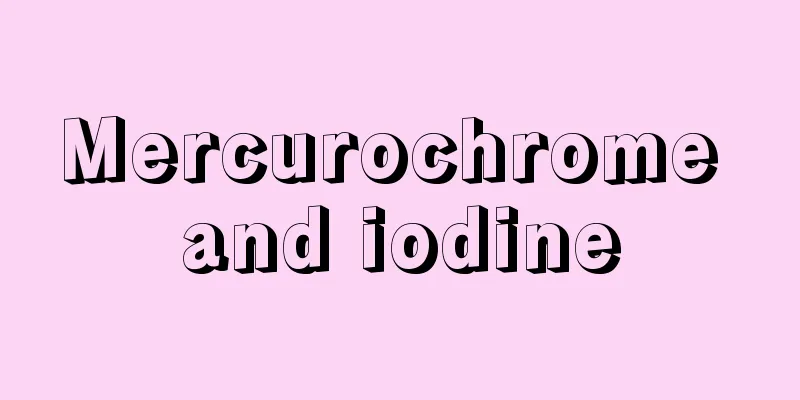Mercurochrome and iodine

|
Mercurochrome and Povidone-iodine are common medicines in people's home medicine cabinets. Many times when people's bodies are bumped or injured, they will use mercurochrome or povidone-iodine to wipe them, but people know very little about the specific effects of mercurochrome and povidone-iodine. Mercurochrome and Povidone-iodine are both disinfectants used to kill bacteria, but mercurochrome and povidone-iodine cannot be used at the same time. Everyone must pay attention to this in daily life. In daily life, bumps and bruises are inevitable, and many people will buy external medicines such as iodine tincture and mercurochrome for treatment on their own. However, patients should be aware that iodine tincture cannot be used together with mercurochrome. Povidone-iodine is an amorphous compound. We are most familiar with its disinfecting effect, which can kill fungi, protozoa and some viruses. It is often used as a bactericidal disinfectant in medicine. It can be used for pre-operative and other skin disinfection, instrument immersion disinfection and disinfection before vaginal surgery. When we have common burns, abrasions, frostbite, contusions and other external injuries, iodine tincture has a very good disinfection effect. Compared with other disinfectants, it will not cause strong irritation and pain. Moreover, the iodine tincture we use is of relatively low concentration and light color, so it is not easy to contaminate clothes! Mercurochrome, also known as mercurochrome, is an organic mercury disinfectant and preservative. After the mercury ions dissociate, they combine with proteins to kill bacteria, but it is ineffective against bacterial spores. Mercurochrome has weak bactericidal and antibacterial effects but is non-irritating, so it is often used for fresh small-area skin or mucous membrane injuries, such as abrasions and bruises. However, because it contains mercury, it can easily cause mercury poisoning when used to disinfect large wounds, so it is rarely used nowadays. If iodine tincture is used together with mercurochrome, iodine and mercuric bromine will react to produce a highly toxic substance - mercuric iodide, which has a strong irritating effect on the skin, mucous membranes and other tissues, causing redness, swelling and blistering of the skin and non-healing of wounds. If mercuric iodide enters the blood, it may also induce gingivitis and, for some patients with poor heart function, may even lead to heart failure. Once you find that the two drugs are used together, you should wipe it off immediately with alcohol cotton and seek medical attention promptly. In addition, it should be noted that long-term continuous use of mercurochrome may affect kidney function. If an allergic reaction occurs when using mercurochrome or iodine, give anti-allergic drugs and symptomatic treatment. |
<<: How to prevent allergic rhinitis
>>: Judging skin color by blood vessel color
Recommend
Is hoarseness definitely a symptom of lung cancer?
Lung cancer is a tumor that people are familiar w...
Why don't you take medicine to reduce tooth inflammation
The health of teeth has a great impact on life, b...
How to tie hair for square face in summer
In life, everyone's face shape is different, ...
Gout diet
In addition to timely treatment, gout patients al...
What are the commonly used chemotherapy regimens for breast cancer in clinical practice?
In recent years, breast cancer has gradually rise...
Is sweating caused by hot compress on waist due to dampness?
Because of injuries or problems in the waist, thi...
What are the late symptoms of pituitary tumors
Some patients with pituitary tumors are not diagn...
Can laryngeal cancer be cured by surgery?
There are many surgical treatments for laryngeal ...
Check whether your liver is healthy in 1 minute
As the number of patients with liver disease grad...
What nutrients does pig brain contain?
Pig brain is actually a common food ingredient in...
Is pituitary tumor hereditary? What harm will pituitary tumor cause?
The occurrence of pituitary tumors is related to ...
Which foods are rich in vitamin B?
Vitamin B is an important nutrient for the human ...
What is the biggest cause of lung cancer? To prevent lung cancer, you should pay attention to these
Smoking is one of the main causes of lung cancer,...
Why do nails fall off layer by layer?
It is very painful for people to have their nails...
What causes rectal cancer
Rectal cancer is a common malignant tumor, which ...









